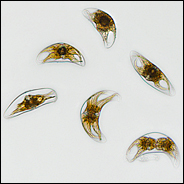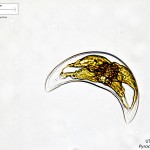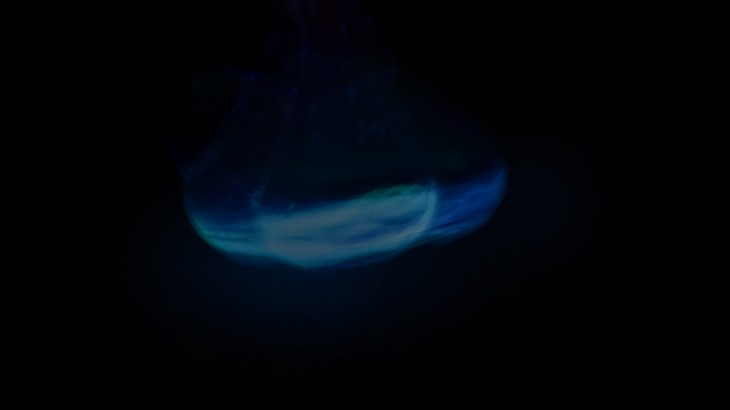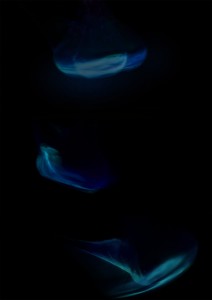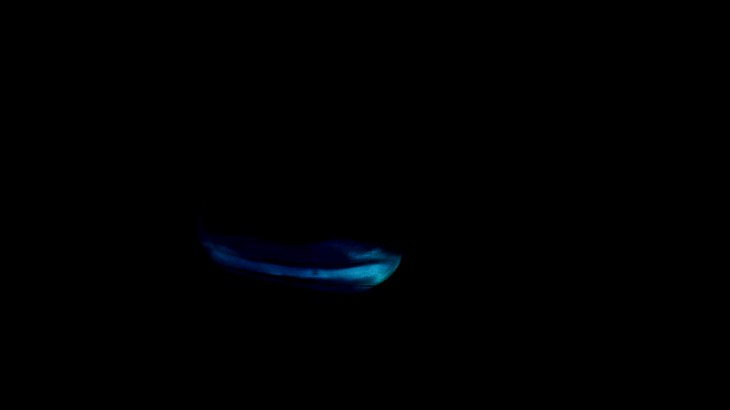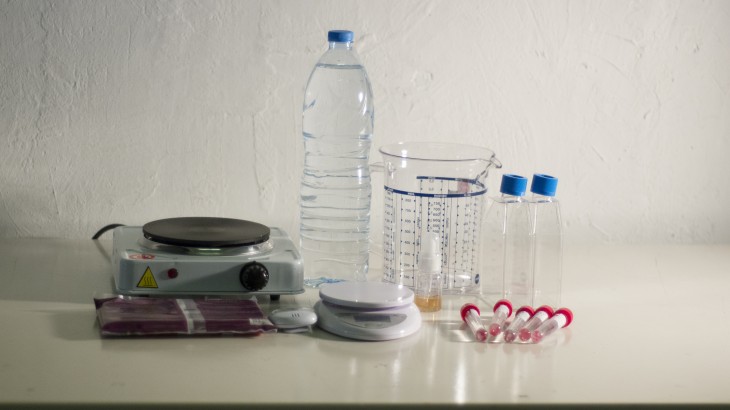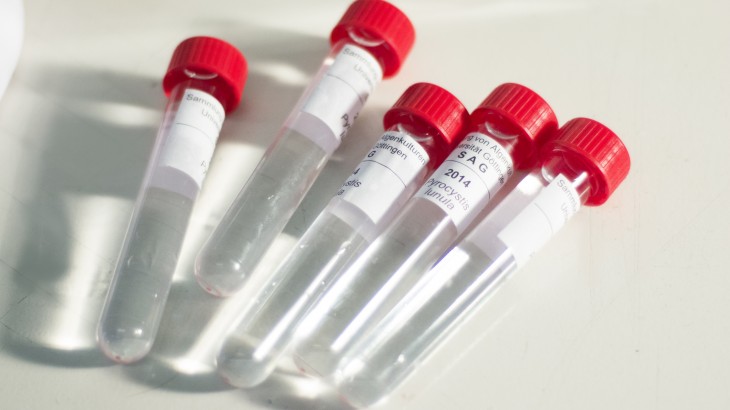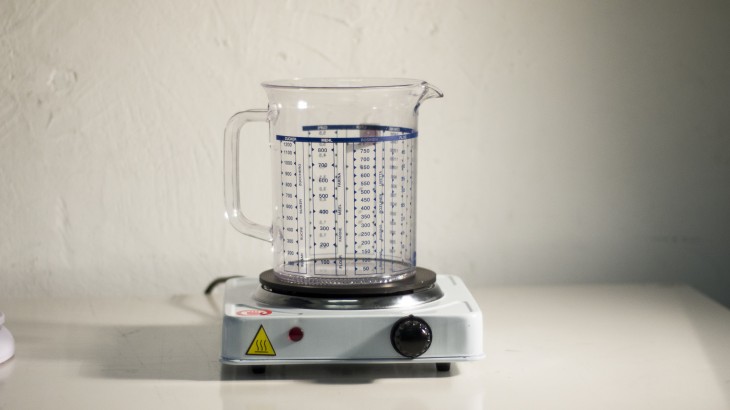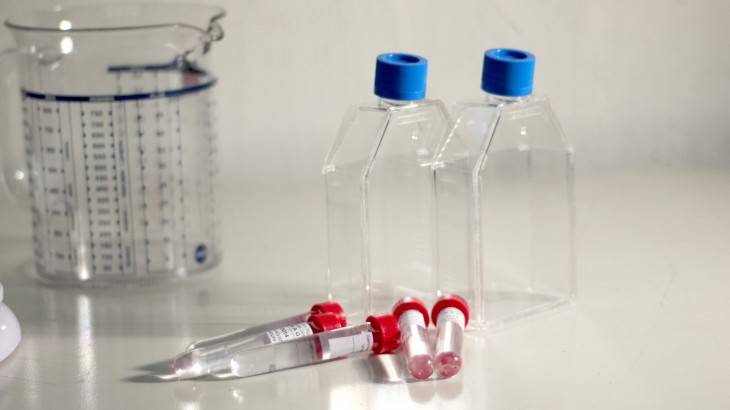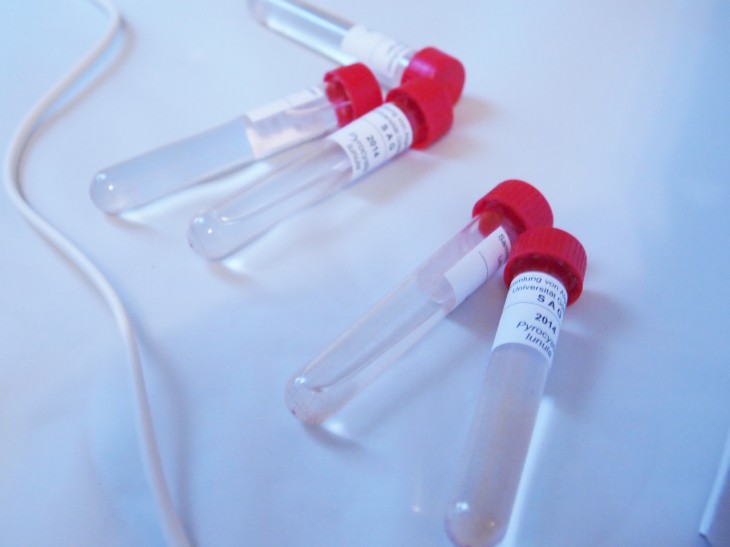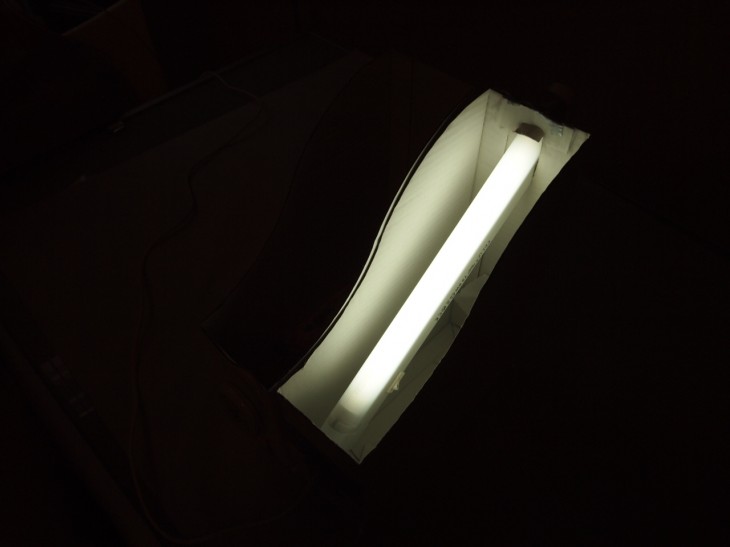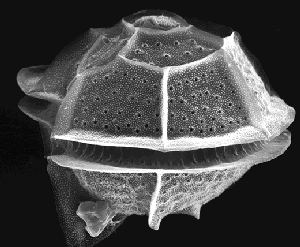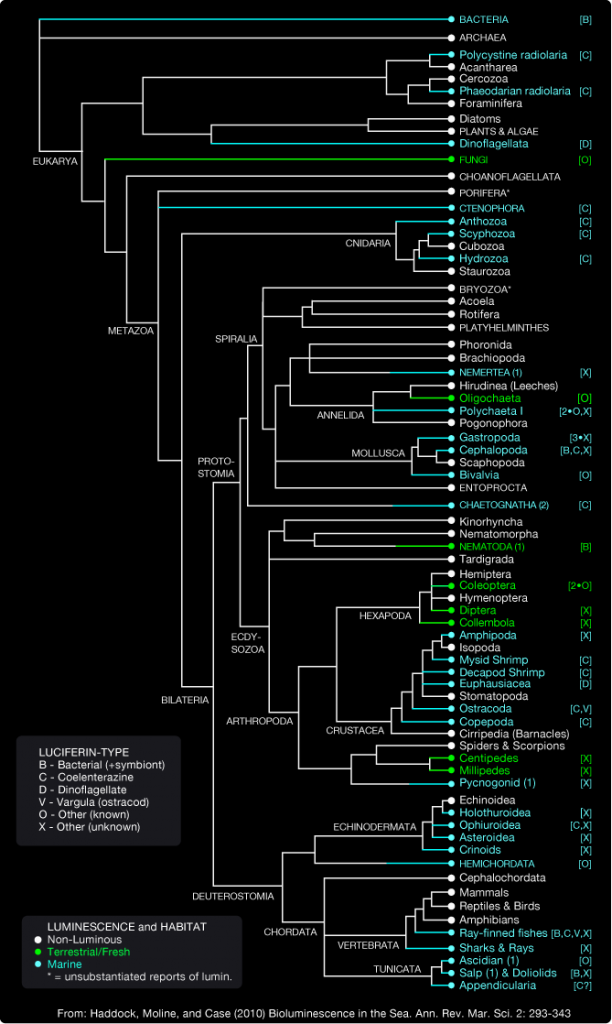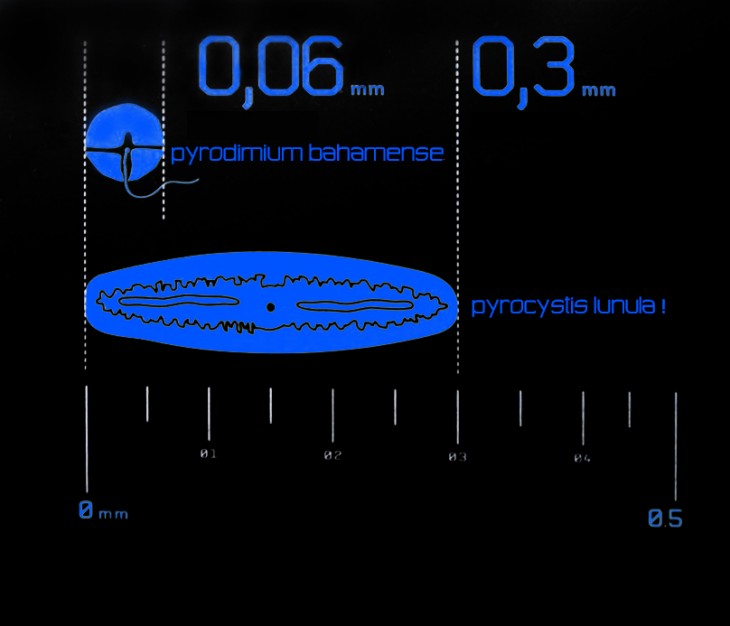
Pyrocystis fusiformis and pyrocystis lunula is a marine dinoflagellate. Dinoflagellates are marine unicellular planktonic organisms. A few species are found in freshwater environments, however 90% of dinoflagellate species are marine. These organisms are found throughout the world’s oceans. Dinoflagellates can perform photosynthetic metabolism, heterotrophic metabolism, or both. P. fusiformis is a mixotroph, meaning that it conducts both photosynthetic and heterotrophic metabolism. As photosynthesizing organisms, dinoflagellates produce a substantial amount of the world’s oxygen, and consume a large proportion of the atmosphere’s carbon dioxide. Dinoflagellates can be found in large numbers in the ocean, and as a result consume a considerable amount of carbon dioxide. Their consumption of carbon dioxide creates a major carbon sink in the carbon cycle 5. This carbon sink is crucial for the function of the global carbon cycle. Dinoflagellates are also important in marine food webs and ecosystems. Dinoflagellates consume other planktonic species, as well as provide a food source for marine filter-feeding organisms such as fish, whale sharks, and baleen whales. Dinoflagellates contribute to the producer trophic level of the marine food web, and help to maintain the diversity of marine organisms seen in the marine ecosystem by providing an essential food source. Some photosynthetic dinoflagellate species live as endosymbionts in marine invertebrates such as sponges and corals. The Lunula, which is the one I will be experimenting with, is much larger that the bahamiense (the one from Vieques, Puerto Rico, talked about earlier), let’s see how that works. They also grow in less density.
These dinoflagellates have a circadian rhythm which controls their bioluminescence and photosynthesis on a 24-hour basis, i.e. they only photosynthesize when they “think” it’s day and they only produce bioluminescence or flash when they “think” it’s night. So, you need to grow them on a strict light schedule, otherwise their natural rhythms can’t synchronize with the light cycle and they won’t know when to flash and when not to flash. This would be an exercise I want to experiment with. Hack the algae’s circadian rhythm. To see if its psible to manipulate the algae to have similar “working” hours as I have (my day is their night).
Ideally, they should get 12 hours of light and 12 hours of darkness every 24 hours and at the same time every day. If you can do this, the dinos will be brightly luminescent whenever they are in their “night phase” and they will be pretty much non-luminescent when they are in their “day phase”. Access to a grow light or T5 FLUORESCENT lamp is important, because then one can really control when they get their photosynthetic light.
